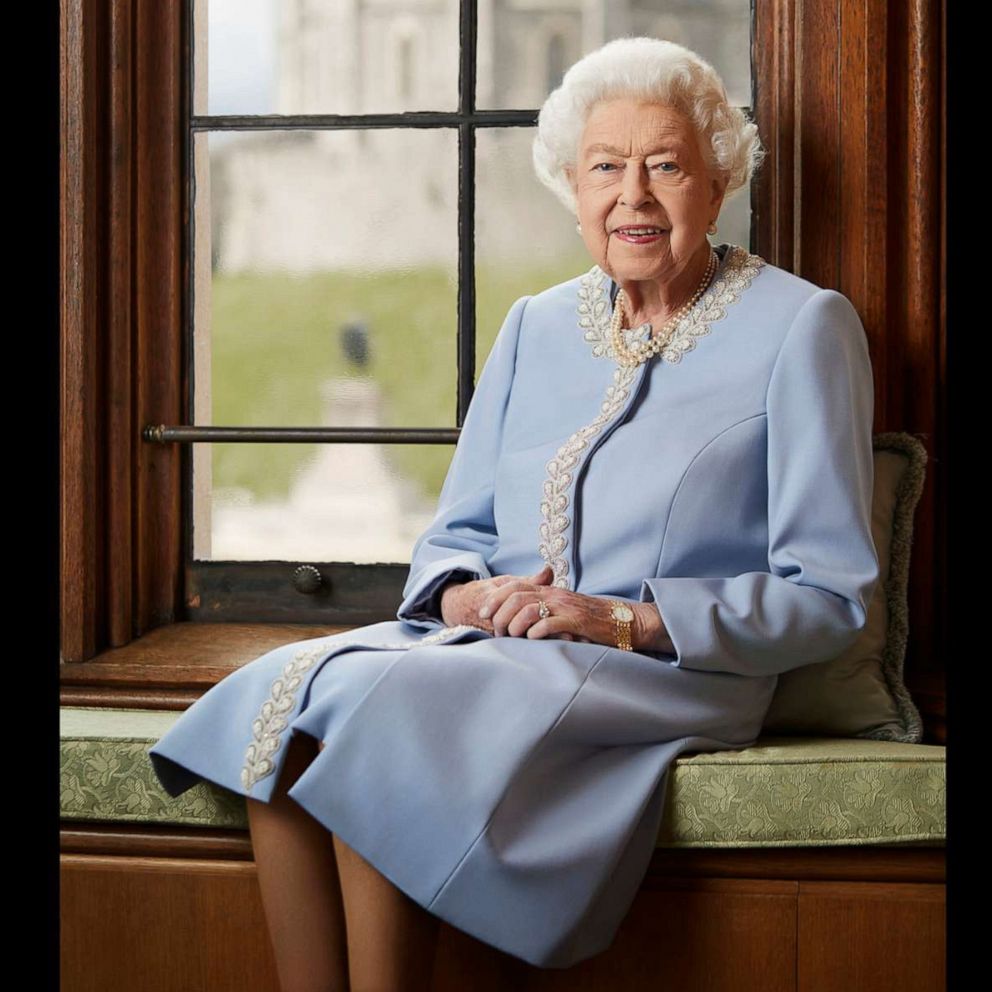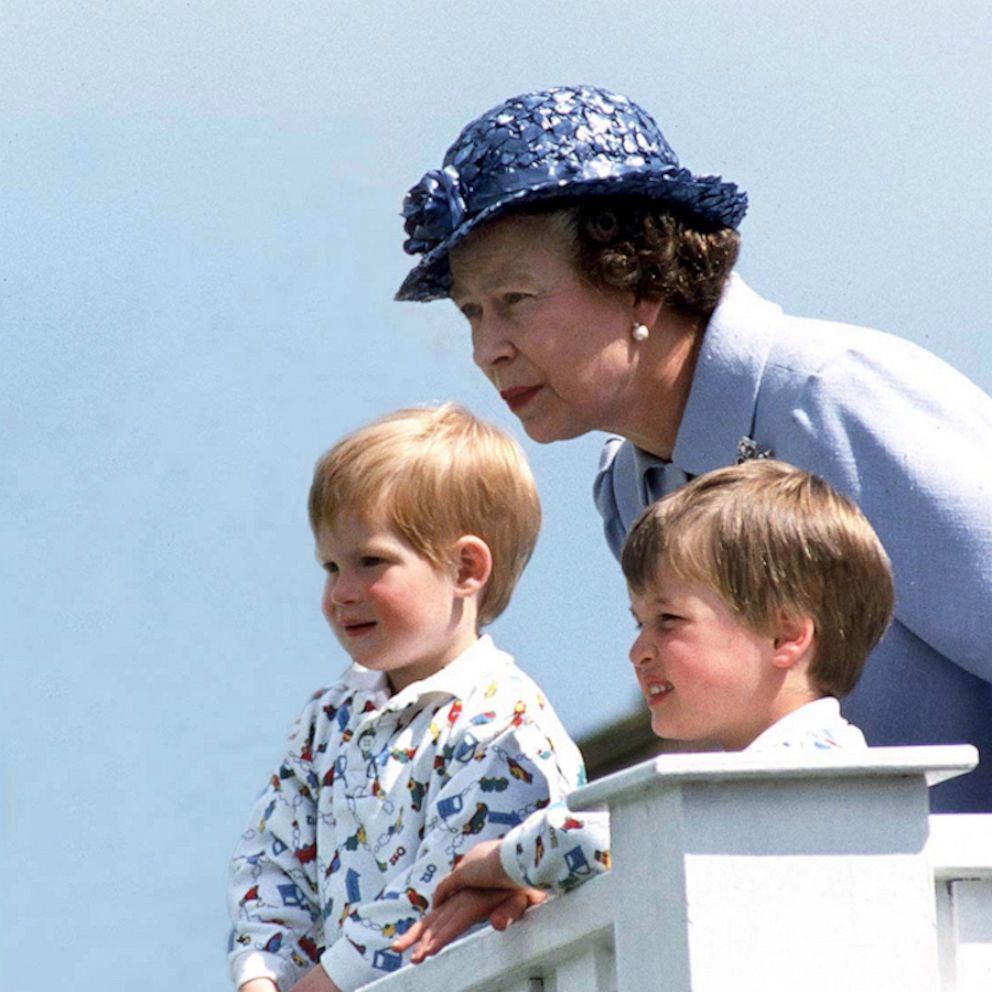What to expect each day until Queen Elizabeth II's funeral at Westminster Abbey
Queen Elizabeth II's death on Sept. 8 at the age of 96 spurred into effect several plans that had been for much of the queen's 70-year reign.
Immediately upon the queen's death at Balmoral Castle, a plan known internally among government and royal officials as Operation London Bridge went into effect, detailing thememorializing of the queen and the transition of power to her eldest son , now officially known as King Charles III.
An additional plan known as Operation Unicorn also went into effect, detailing the process of transporting the queen's coffin from Scotland to London, where her funeral will take place.
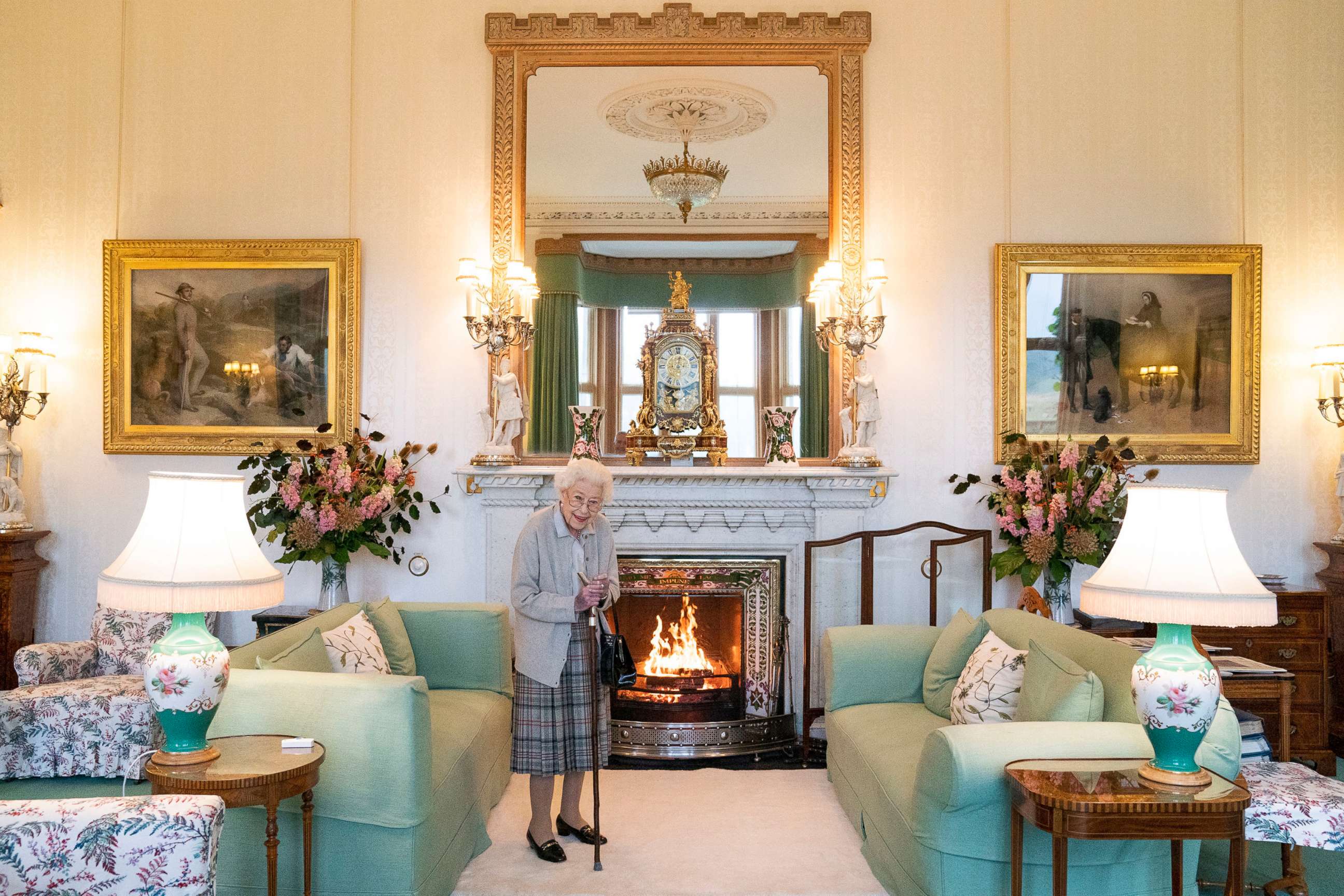
A plan known as Operation Spring Tide, meanwhile, lays out the details of Charles' accession to the throne.
Here is what to expect with all three plans in effect, detailing -- down to the minute --memorial services and the path ahead for the monarchy.
A period of mourning
A period of national mourning for Elizabeth began on the day of her death and will last until her funeral on Sept. 19.
Described as a "period of time for reflection," the mourning period will see public services and businesses operating as usual in the U.K., with the option to suspend or pause activities at their own discretion. Flags at royal residences, government buildings and military establishments will fly at half-mast during this time, according to the U.K. government.
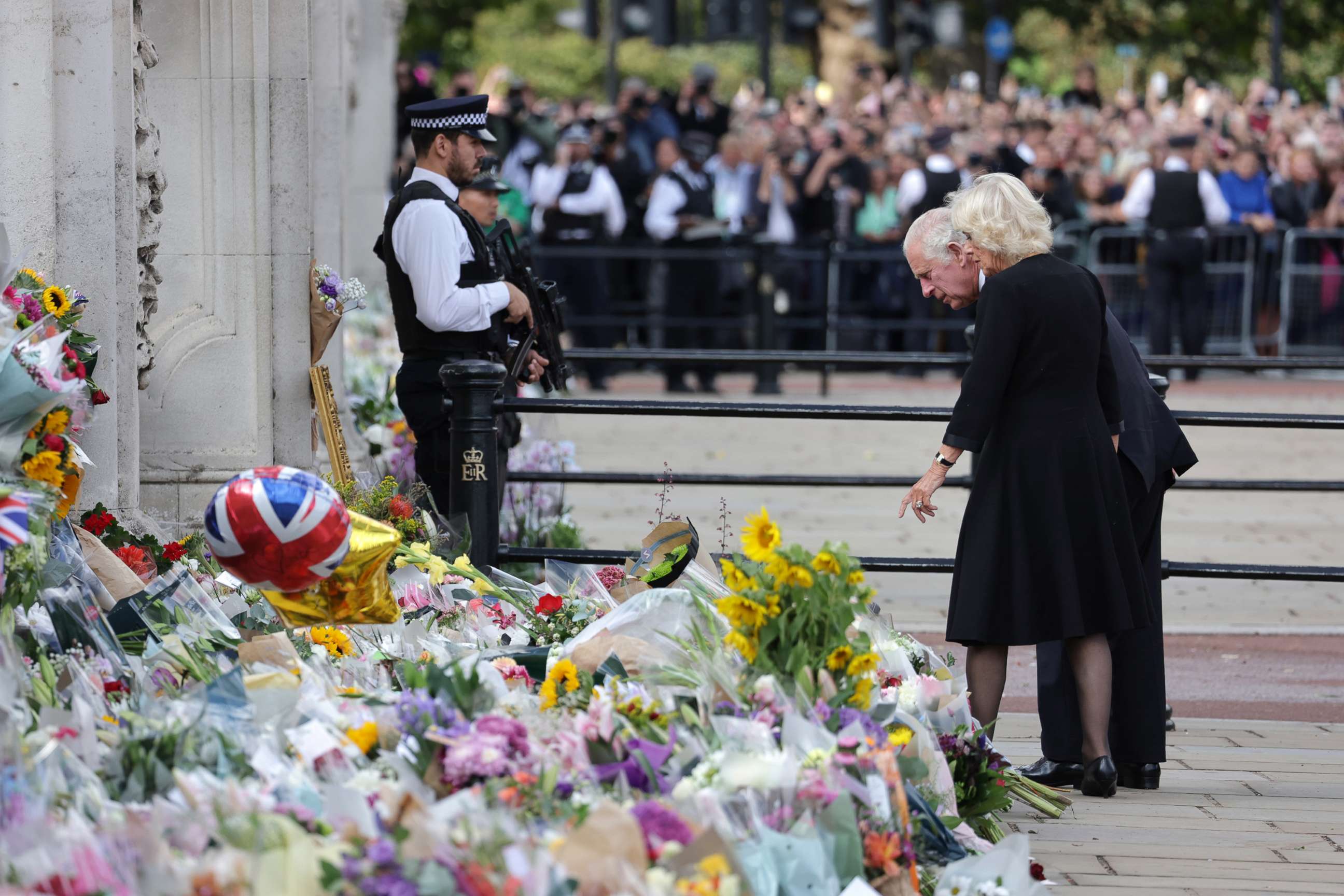
Buckingham Palace has also declared a period of royal mourning, which is observed from now until seven days after the queen's funeral.
During that time, flags will fly at half-mast -- except for the Royal Standard -- and royal residences will be closed, according to the palace.
Daily remembrances, formalities leading to a state funeral
Operation London Bridge designates the day of the queen's death as "D-Day," with each subsequent day known as D-Day+1, D-Day+2, all the way to the day of the queen's funeral.
Remembrances of the queen in the first three days after her death were led by Charles, who delivered a nationally televised address and was formally proclaimed king by the Accession Council -- composed of senior government officials, judges and leaders of the Church of England -- at St. James's Palace.
The week leading up to the queen's funeral will see additional members of the royal family partaking in services and processions as the queen's coffin travels from Scotland to its final resting place in Windsor, England.
Here is what to expect each day leading to the queen's funeral on Sept. 19, at Westminster Abbey.
Monday, Sept. 12:
The queen's coffin was moved from the Palace of Holyroodhouse to St. Giles' Cathedral in Edinburgh, Scotland.
Thousands of people lined the streets to watch the procession of the coffin, which the queen's children -- Charles, Prince Andrew, Princess Anne and Prince Edward -- and their respective spouses walked behind on the nearly one-mile route down Edinburgh's Royal Mile.

Members of the royal family then attended a service of Thanksgiving for the queen at St. Giles' Cathedral.
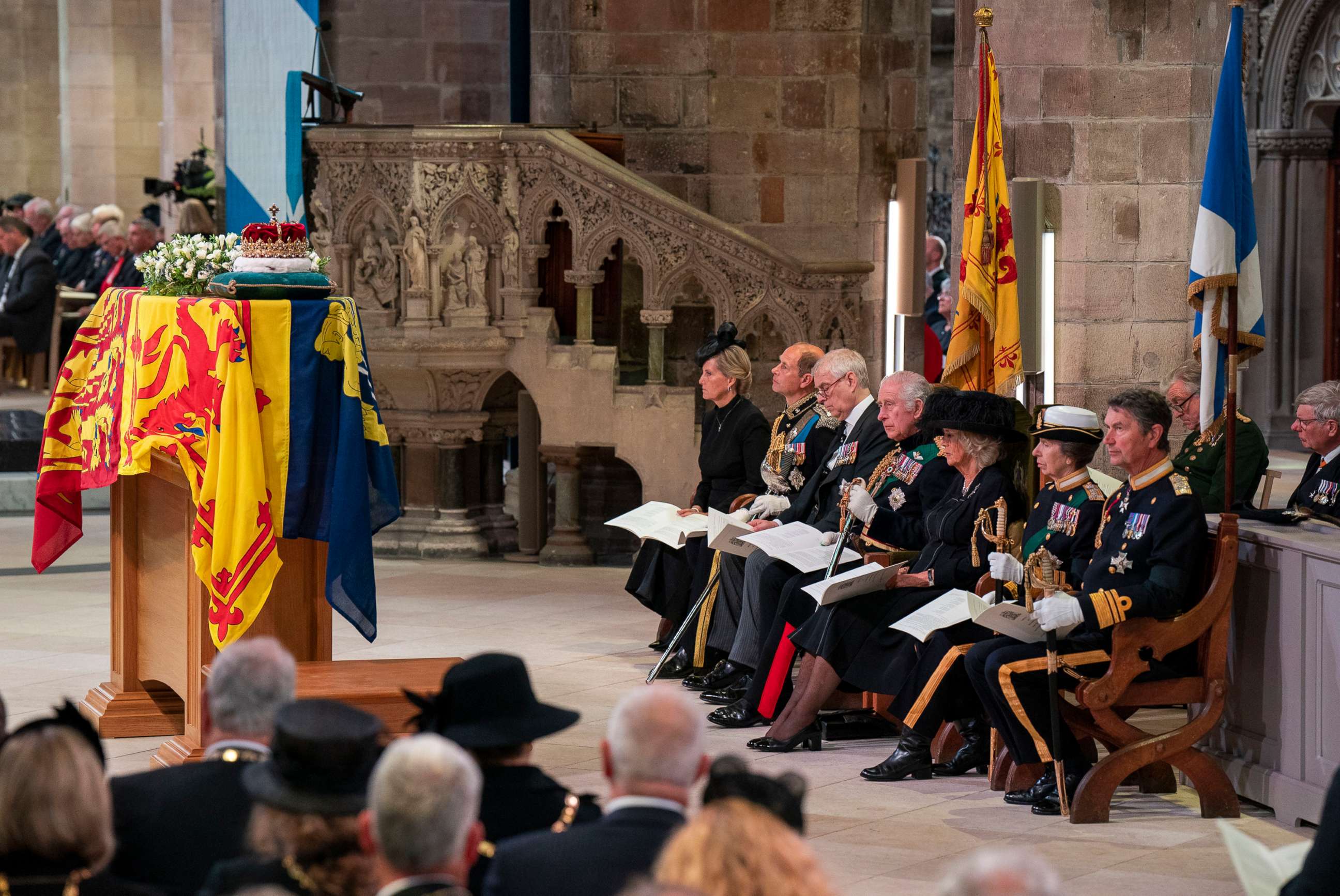
The coffin -- adorned with a wreath featuring dried white heather from the queen’s beloved Balmoral Castle -- will lie in rest at St. Giles’ Cathedral for 24 hours so the people of Scotland can pay their respects.
Tuesday, Sept. 13:
The queen's coffin was moved from St. Giles' Cathedral to Edinburgh airport on Tuesday, and then flown to London.
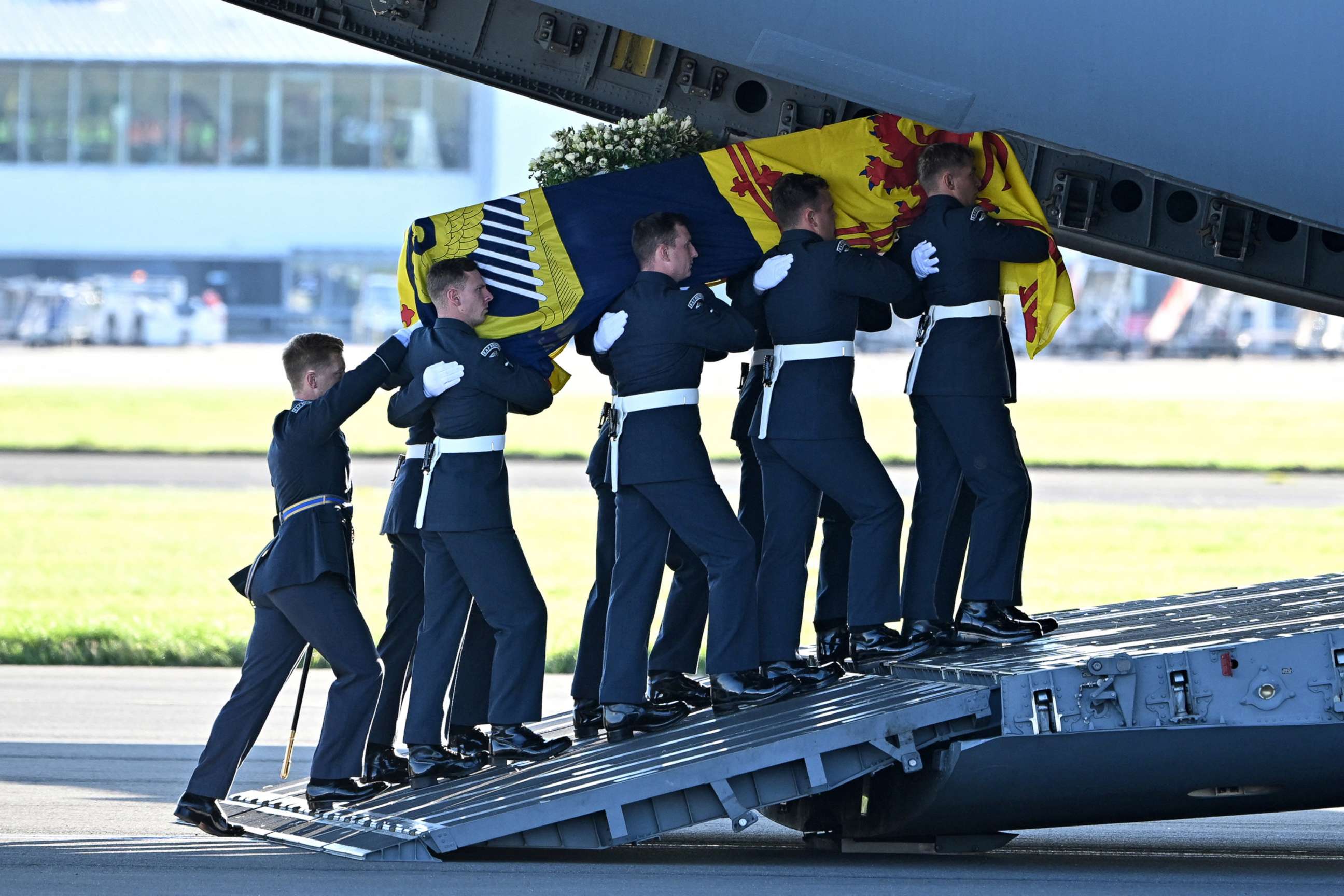
Anne, the only daughter of the queen and her late husband Prince Philip, and her husband Vice Admiral Sir Tim Laurence accompanied the queen's coffin on the journey.
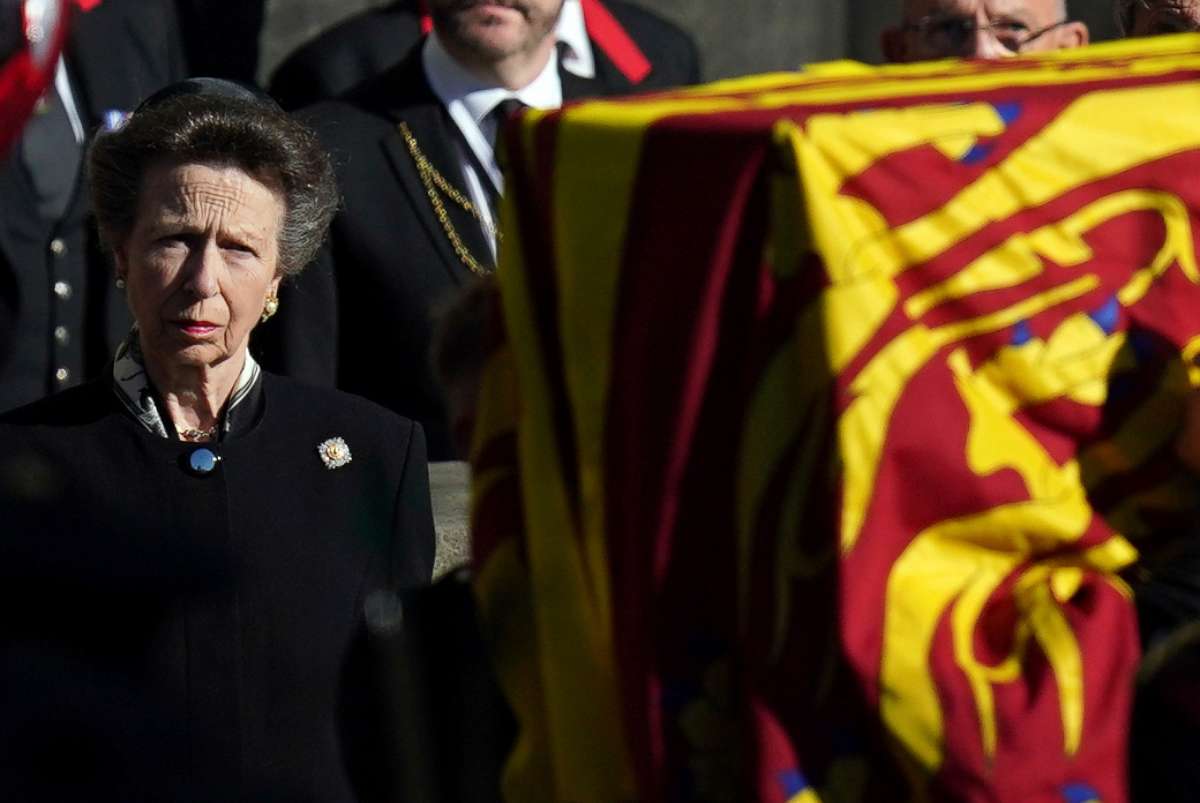
Once in London, the coffin was driven to Buckingham Palace, where it was met by members of the royal family. The coffin rested in the palace's Bow Room overnight.

Wednesday, Sept. 14:
A procession of royal family members and a small number of the military escorted the queen's coffin from Buckingham Palace to the Palace of Westminster, where the queen will lie-in-state at Westminster Hall.
The queen's coffin was draped with the Royal Standard. Placed on top of the coffin was the Imperial State Crown on a velvet cushion and a wreath featuring white roses, white dahlias and foliage from Balmoral and Windsor Castles.
Thousands of people lined the nearly two-mile procession route through Queen's Gardens, The Mall, Horse Guards and Horse Guards Arch, Whitehall, Parliament Street, Parliament Square and New Palace Yard.
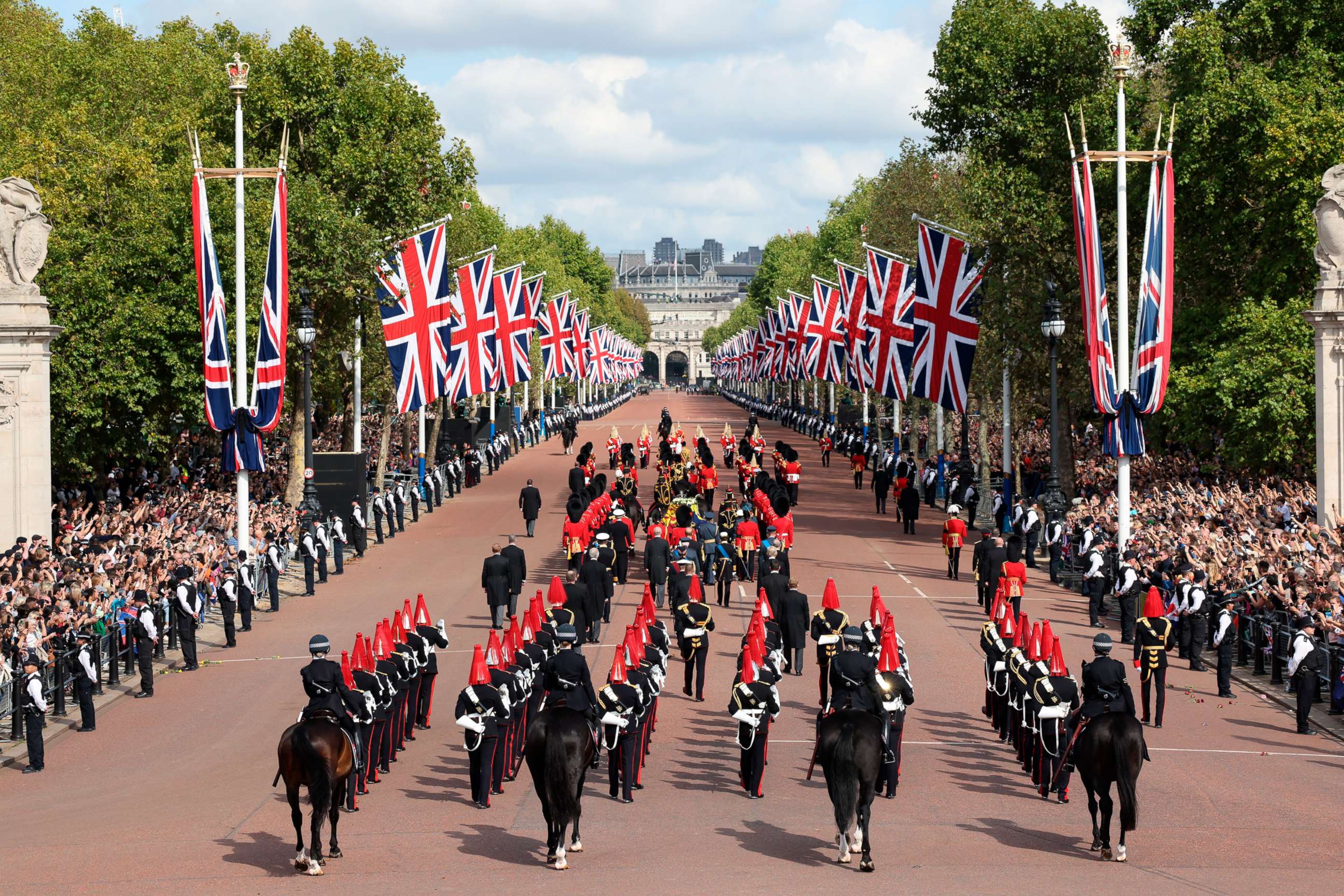
Once the coffin arrived at Westminster Hall, the Archbishop of Canterbury led a service attended by royal family members, members of the household staff and invited dignitaries.
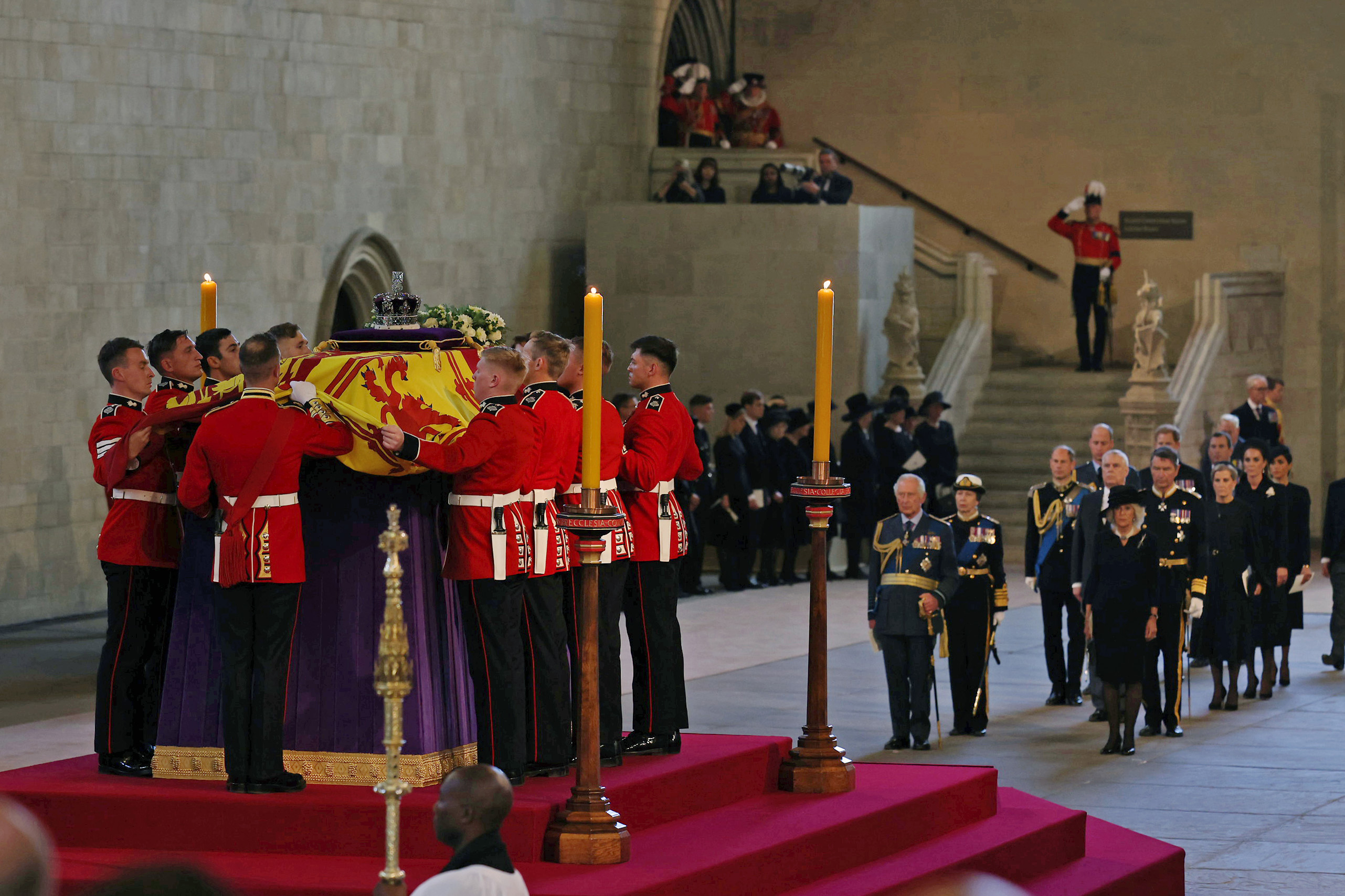
Beginning at 5 p.m. local time on Wednesday, members of the public began to be allowed inside to pay their respects to the queen, a practice that will continue through 6:30 a.m. local time on Sept. 19, according to the U.K. government..
People lining up to see the queen's coffin will have to go through "airport-style security" and will only be allowed to take in small bags, according to the government.
In addition, officials are warning the public to prepare for long lines.
"Those wishing to attend will be required to queue for many hours, possibly overnight," the government says on its website. "Large crowds are expected and people are encouraged to check ahead, plan accordingly and be prepared for long wait times."
Thursday, Sept. 15:
The queen's coffin lies in state at Westminster Hall.
Friday, Sept. 16:
The queen's four children -- Charles, Anne, Andrew and Edward -- stood vigil at her coffin inside Westminster Hall.
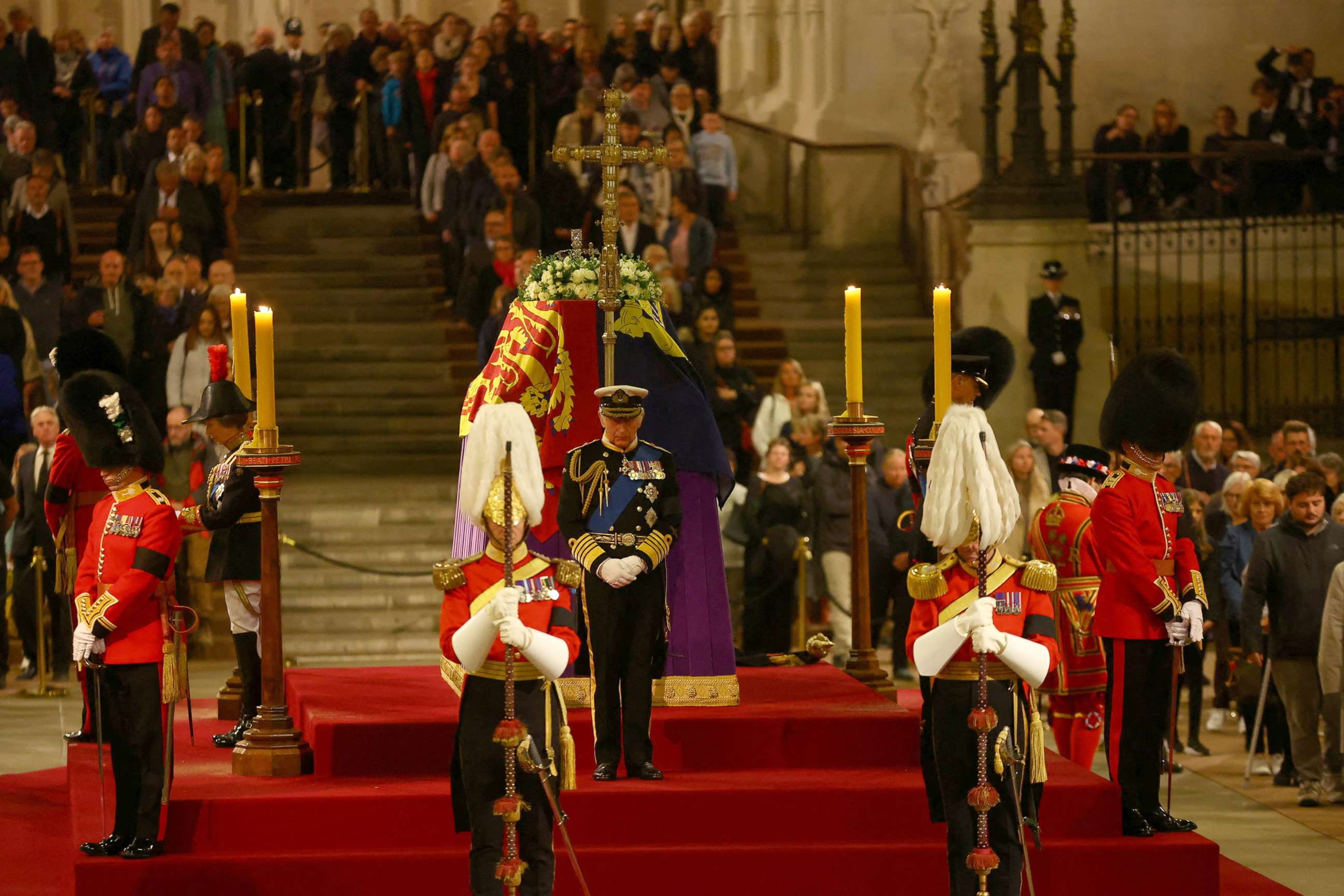
Members of the public remained in line and silently filed past the queen's children as other members of the royal family -- including Camilla, the Queen Consort, and grandchildren of Queen Elizabeth -- watched.
Andrew, who served in the Royal Navy and flew in the Falklands War, was permitted to wear his military uniform for the vigil even though he was stripped of his honorary military roles following his alleged involvement in the Jeffrey Epstein sex trafficking scandal.
Saturday, Sept. 17:
The queen's eight grandchildren will hold vigil at her coffin, including the heir to the throne, William, the Prince of Wales, and his brother, Harry, the Duke of Sussex.
Charles requested that William and Harry both wear military uniforms at the vigil, which will mark the first event since the queen’s death that Harry is seen in uniform. Harry has a decadelong career in the military, including two tours of duty in Afghanistan, but he's no longer a working royal.
Sunday, Sept. 18:
The queen's coffin lies in state at Westminster Hall for the final full day.
In addition, a one-minute moment of silence will be held across the U.K. at 8 p.m. local time.
Monday, Sept. 19:
A state funeral for the queen will begin at 11 a.m. local time at Westminster Abbey, making the queen the first sovereign to have a funeral there since 1760.
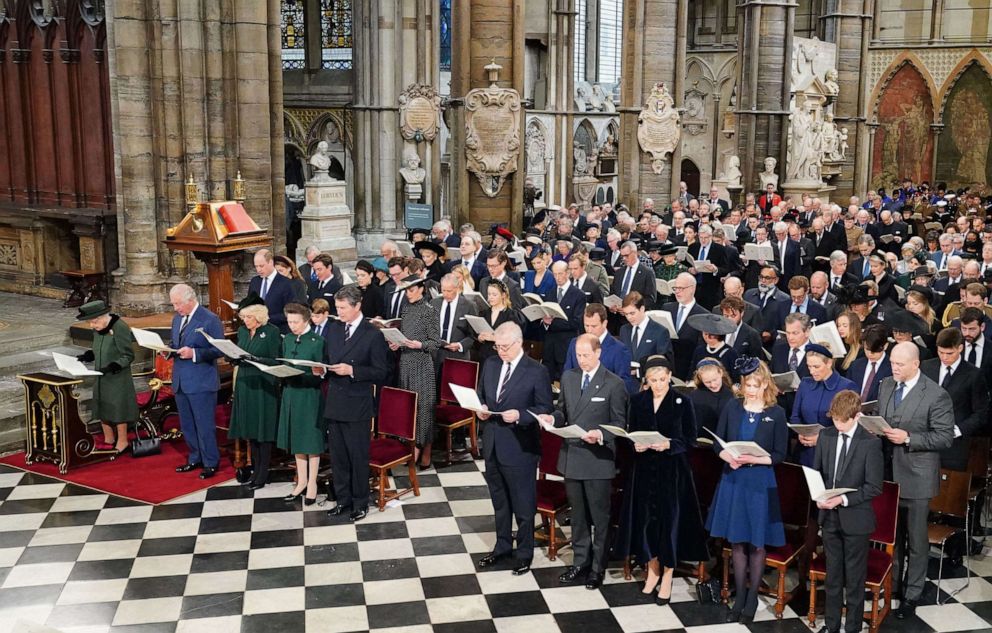
Westminster Abbey normally holds 2,200 congregants, but extra seating can be arranged to accommodate more than 8,000 people, as it did at the queen's coronation.
Following the funeral, the queen's coffin will travel in a procession from Westminster Abbey to Wellington Arch and then to Windsor.
Once in Windsor, the state hearse will carry the coffin along the Long Walk to the queen's final resting place at St. George's Chapel, on the grounds of Windsor Castle.
The queen will be buried next to her father King George VI, her sister Princess Margaret, and Prince Philip, her beloved late-husband of 73 years.
Charles' coronation ceremony
Though he is already king, Charles' coronation -- the ceremony during which he is formally crowned -- is likely to take place several months from now.
The queen's coronation, for example, took place on June 2, 1953, over one year after she ascended the throne upon her father's death.
Charles is expected to be crowned at Westminster Abbey, where each coronation has taken place for the last 900 years, according to the royal family's website.

The elaborate ceremony will be broadcast to the world and will see Charles take the coronation oath and have the St. Edward's Crown placed on his head by the archbishop of Canterbury.
As queen consort, Camilla is expected to be crowned at the same time as her husband.


